March and it’s like a switch flicks in birders brains in Europe, suddenly everyone’s ‘doing’ sub-Saharan migrants (or should that be trans-Saharan migrants and why don’t I know?). Birders the length and breadth of the continent salivating over the prospect of spring migration, hirundines, warblers, waders, scarce, rare; the excitement of that first Wheatear or Sand Martin is almost tangible.
It takes a little longer for the hordes pouring out of Africa to reach the north of England, at least a week, often two after the first migrants make landfall on southern coasts before we get even a sniff of anything that has been near a Wildebeest over the winter.
However early March sees the passage of a vastly underrated migrant to British Shores, or should that be from British Shores as they have probably been present all winter? The Scandinavian Rock Pipit A.p. littoralis is a regular winter visitor in Britain that remains relatively undetected due to the similarity in plumage of most wintering birds to our own resident Rock Pipits A.petrosus.
Rock Pipit in January- probably, almost certainly, most brits would say petrosus.
Another Rock Pipit in January – the brave might call this littoralis
The two images above probably represent opposite ends of the spectrum when it comes to wintering Rock Pipits in Britain. I’ve no intention of offering a full ID article, most of the individuals you come across from November to the end of February are simply not assignable to race but these examples perhaps show in my view that some can be.
The lower bird is almost certainly littoralis the general upperpart tone lighter olive grey; the more prominent supercilium; whiter median and greater covert tips as opposed to buff; white rather than dirty grey outer tail feathers and restricted flank smudging and streaking all point to this individual being a Scandinavian Rock Pipit. The two images were taken a few minutes apart on the same day in the same location.
By March though Scandinavian Rock Pipit begins to show some changes into breeding plumage and outs itself as a migrant rather than a resident. A delicate hint of a pink wash on the breast, reduced breast streaking, a much stronger and whiter supercilium along with a a head and mantle turning slate grey are all giveaway signs of littoralis.
In the last few days we’ve seen a rush of these birds moving along the East Coast, some easier to pick out than others; feisty and energetic they’re as much part of the spring movement as the soon to be here Swallows and Swifts. It could be argued rarer too as in a couple of weeks they’ll be on the other side of the North Sea listening to Abba and drinking expensive beer.
Often feeding on washed up seaweed above the tide line, sit yourself down and they’ll walk to within a few metres offering the opportunity to really get a good look at them. Later in the month some of the stragglers can look pretty amazing, almost in full breeding plumage, inviting confusion with Water Pipit A spinoletta though I’ll steer well clear of that particular ID challenge for now given the number of times I’ve gone the wrong way recently!
Here’s a small gallery of my own personal record images all showing individuals I believe to be littoralis from the past week or so at a site that has had up to six present on any given day and maybe as many as 10-12 different individuals move through.
The passage this year is expected to be a good one with perhaps many more birds than usual moving south and west in the bitter cold weather and heavy snows of December and I fully intend to make the most of it. The only downside is after spending a few hours prostrate amongst the washed up seaweed and debris my car and boots now smell like rotting fish which results in some odd looks when I pick the kids up from nursery immediately after a photo session.

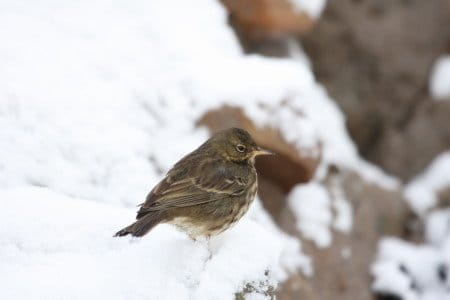
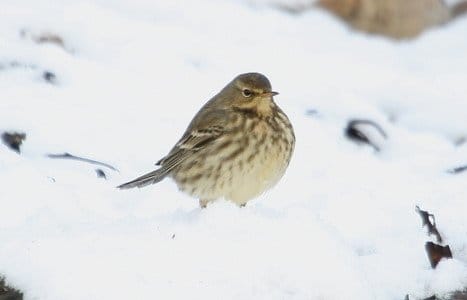
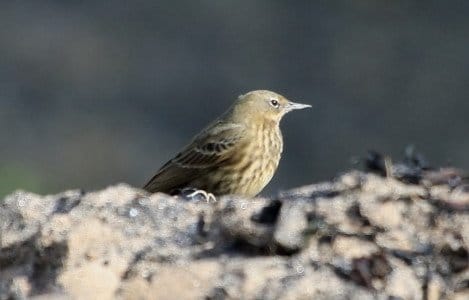
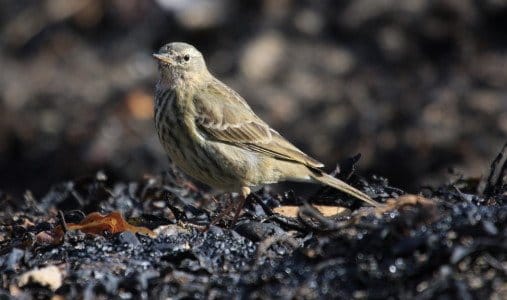
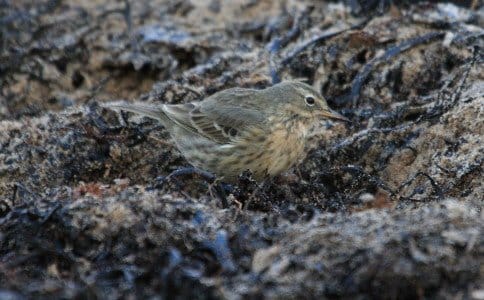
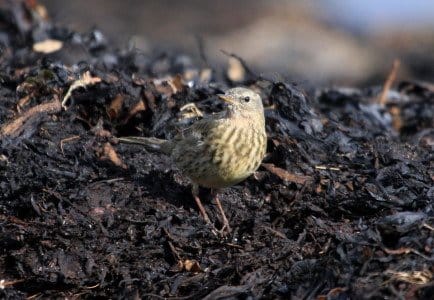
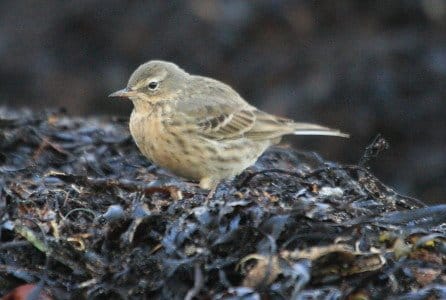










Drool, drool, drool…
Oh, I miss it! To lie down on a beach amongst mountains of smelly and rotten seaweed, hoping it doesn’t contain too many dead fish as you rub your clothes into it crawling forward, and sneaking up on a group of “Water Pipits”, wondering if it will be spinoletta or littoralis, hoping for Siberian Buff-bellied and dreaming of being able to read a ring from the UK, making it the first record of petrosus for the German Baltic coast (sadly, the latter two scenarios turned out to be purely hypothetical – the fish fears however did materialize once or twice).
I so miss it now that I live inland!!!! 🙁
By the way: at the Baltic coast we had large flocks of spinoletta migrating through in late March/April, and due to them moulting from non-breeding to breeding plumage, many had seemingly pale lores.
THAT was an adrenaline rollercoaster! 🙂
Thanks for such an amazing post. I am green with envy!! And never mind Mediterranean Slyvias and such – there’s pipits to check!
Alan, I love your turn of phrase: “…a sniff of anything that has been near a Wildebeest over the winter.” Terrific post. I can only hope to one day need to figure out what race of Rock Pipit I’m looking at!
Jochen, japonicus is still to be recorded in the UK but definitely on the radar of many I suspect. I couldn’t live too far from the sea, not just the pipits I need to smell the salt and hear the waves.
Mike, thanks for the kind comment, I haven’t checked but are there any North American records of Rock Pipit?
No Rock or Water Pipits in NA–yet! One that’s way overdue is Mipit.